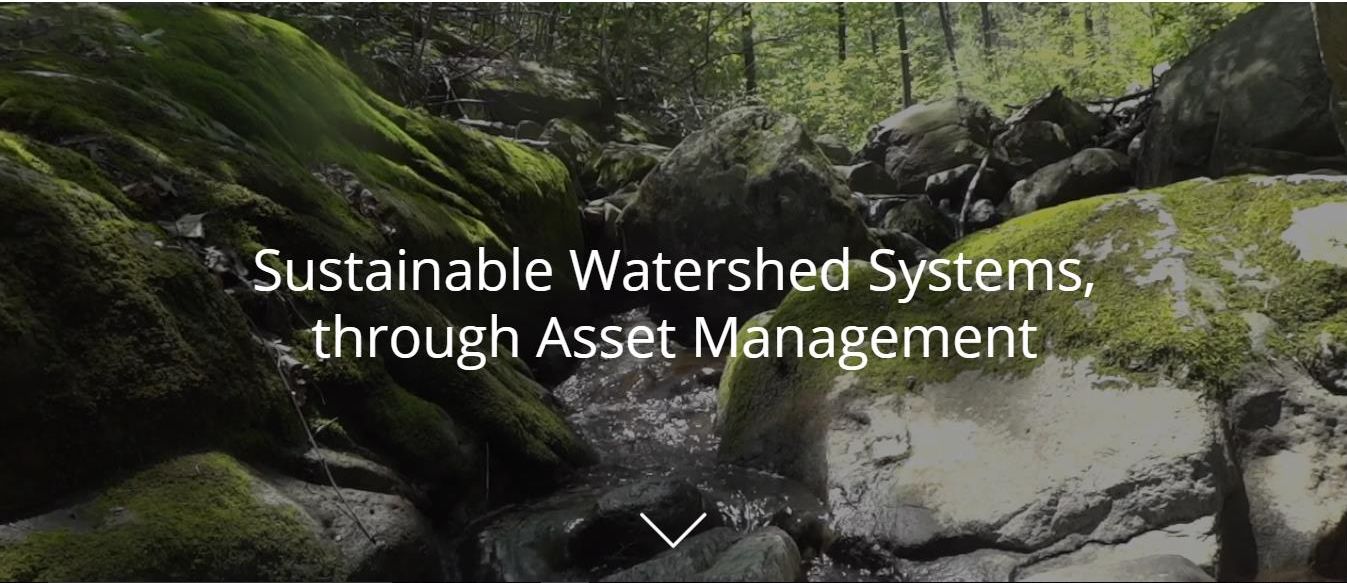Flood, drought, fire, wind and cold – because extreme events are becoming the norm…..
Note to Reader:
“Local governments in British Columbia already face a $200 billion challenge for renewal of aging hard infrastructure – such as watermains, sewers and roads. And now, as communities face the increasing impacts of climate change, there is another unfunded liability – the cost to restore watershed hydrology and water resilience in the built environment,” states Kim Stephens, Executive Director, Partnership for Water Sustainability.
“ British Columbia has arrived at a fork in the road. How, and how quickly, will communities respond? And how will they adapt over time to the New Normal?
British Columbia has arrived at a fork in the road. How, and how quickly, will communities respond? And how will they adapt over time to the New Normal?
“Asset Management for Sustainable Service Delivery: A BC Framework provides a financial driver for local governments to integrate a whole-system, water balance approach and climate adaptation into asset management. Outcome-oriented, the BC Framework sets a strategic direction to reduce life-cycle costs and risks. It also encourages ‘design with nature’ actions on the land. The benefits would ripple through time and accumulate to restore the water balance in the built environment.
“In March 2017, the governments of Canada and British Columbia announced program funding for Sustainable Watershed Systems, through Asset Management. This initiative supports the BC Framework. The goal is to transform how local governments and others think about the drainage function – so that they will value ‘watersheds as infrastructure assets’ when making decisions about land use, infrastructure servicing and asset management policies and practices.”
Planning for a water-resilient future: Governments of Canada and British Columbia fund water balance tools and resources for climate adaptation action
The Implementation Challenge: How to Transition from Awareness to Action
The professional development and outreach program led by the Partnership for Water Sustainability in BC (“the Partnership”) is progressing on multiple fronts to develop approaches, tools and resources that would achieve this educational outcome: build practitioner capacity to implement a whole-system, water balance approach within the built environment.
The Ecological Accounting Protocol (EAP) approach to valuing watersheds as infrastructure assets is being tested through demonstration applications in the Cowichan and Comox valleys on Vancouver Island. Three more guidance documents in the Watershed Case Profile Series will be released shortly. Three symposium-style events are upcoming. And, the Partnership is excited to announce that waterbalance.ca is the homepage for Sustainable Watershed Systems, through Asset Management.
A new tool is the Water Balance Model Desktop. It provides an advanced problem-solving capability. Its appeal is that the process for applying it would help communities create a vision of the desired future water balance for a watershed, and the steps to achieve it.
Water Balance Tools & Calculators
Comprehensive and coordinated use of the 11 decision support tools listed below, and accessible from waterbalance.ca, would assist communities on their journeys to a water-resilient future:
- Water Balance Model Desktop (NEW) – Facilitates application of the Water Balance Methodology (WBM) to establish watershed-specific performance targets. In turn, this would support use of EAP. These are the twin pillars of the whole-system, water balance approach.
- Water Balance Model Online (ENHANCED) – A planning tool for assessing green infrastructure effectiveness at neighbourhood or individual property scales. Compare scenarios for runoff reduction. Modules include: Climate Change, Stream Erosion, Tree Canopy Rainfall Interception, Rainwater Harvesting.
- Water Balance Express (ENHANCED) – An interactive tool for homeowners. Created to spur changes in practice. Click and drag components. Learn what it means and how to slow, spread and sink rainwater that runs off hard surfaces.
- QUALHYMO Engine – Powers the Water Balance family of tools. Continuous and multi-year simulation modelling of hydrologic processes and water quality. Model has watershed, receiving stream and BMP components.
- Drainage Infrastructure Screening Tool – Assess level-of-service for conveyance systems. Consider impact of both climate change and land use change at the same time, and with the same tool.
- BC Water Conservation Calculator – Developed to support provincial grant applications, this tool is used by communities to demonstrate how fiscal and water savings would be achieved.
- BC Agriculture Water Calculator – Developed to support the BC Groundwater Regulation, helps agriculture water users estimate annual irrigation or livestock water demands for farms.
- Agricultural Irrigation Scheduling Calculator – Uses real-time evapotranspiration (ET) data from climate stations to determine drip irrigation run times and sprinkler irrigation schedules for agriculture.
- Landscape Irrigation Scheduling Calculator – Uses real-time ET data for climate stations across Canada to determine landscape irrigation system run times.
- Soil Hydraulic Properties Calculator – Useful for irrigation design. Select soil type to determine field capacity, wilting point, saturated hydraulic conductivity and maximum water content.
- Evapotranspiration Calculator – Obtains real-time ET data for climate stations across Canada. A crop’s water requirement or water usage is directly related to ET.
A Look Ahead
A foundation piece for the Whole-System, Water Balance Approach is understanding how water gets to a stream, and how long it takes.
British Columbia’s new Water Sustainability Act will establish regulations pertaining to stream health and aquatic environments. The environmental flows objective may open the door to requiring Flow-Duration Analysis. This would then be a regulatory driver for use of the Water Balance Model Desktop.

Moving Towards “Sustainable Watershed Systems, through Asset Management”, released in November 2015, initiated recognition of ‘watersheds as infrastructure assets’.
Reflections on Bridging the Gap
“ Climate change is real. Adapting to it begins with an attitude change towards water. Once that happens, it is possible to bridge the gap between talk and action,” states Ted van der Gulik, Partnership President.
Climate change is real. Adapting to it begins with an attitude change towards water. Once that happens, it is possible to bridge the gap between talk and action,” states Ted van der Gulik, Partnership President.
“Still, getting to a water-resilient future will require transformational changes in how we apply hydrologic knowledge, value nature as an asset, and service land. The Partnership mission is to provide local governments with tools and resources that will help them do that.”
Ahead of the Curve
 “The current industry-wide move to on-line computation, propelled by changing approaches to software delivery as a multitude of enterprises commit to The Cloud, is hugely important,” adds Dr. Charles Rowney, the Partnership’s Scientific Authority.
“The current industry-wide move to on-line computation, propelled by changing approaches to software delivery as a multitude of enterprises commit to The Cloud, is hugely important,” adds Dr. Charles Rowney, the Partnership’s Scientific Authority.
“The leadership shown by the Partnership for Water Sustainability in decisively moving in this direction well over a decade ago has led to a body of knowledge from which others can learn.”
North American Leaders
 “The Partnership for Water Sustainability is evolving online tools that support implementation of the whole-system, water balance approach. British Columbia, Washington State and California are leaders. We are moving forward in parallel on this journey,” continues Jim Dumont, the Partnership’s Engineering Applications Authority.
“The Partnership for Water Sustainability is evolving online tools that support implementation of the whole-system, water balance approach. British Columbia, Washington State and California are leaders. We are moving forward in parallel on this journey,” continues Jim Dumont, the Partnership’s Engineering Applications Authority.
“A commonality is that all three regions are addressing impacts to the stream. Washington State and California have gone a step further than BC and mandated Flow-Duration Analysis as a regulatory requirement. Real-world success would be defined as reduced stream erosion during wet weather, and sustained ‘environmental flows’ during dry weather.”

Commencing with release of Moving Towards “Sustainable Watershed Systems, through Asset Management” in November 2015, an initiative has been underway to transform how local governments and others think about the drainage function and to recognize ‘watersheds as infrastructure assets’.
Sustainable Watershed Systems would be the outcome in Step Three. But it is not a wait-and-see proposition. Even as local governments are progressing through Steps One and Two for their core infrastructure, they need to be laying the groundwork so that they would be ready to implement Step Three.
To learn more about “Sustainable Watershed Systems, through Asset Management” – CLICK HERE


